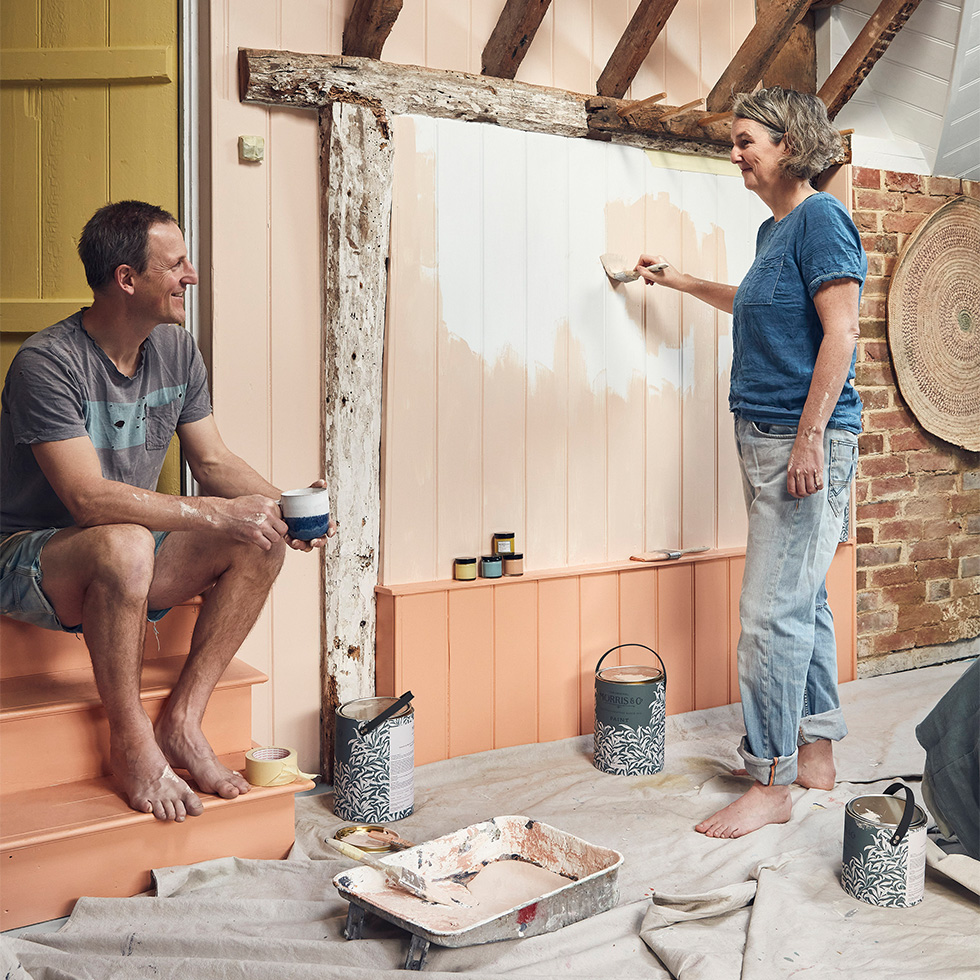Our archival paint palette has a colour for every atmosphere and occasion. Ready to re-paint your living room in a moodier hue? Look no further than the deep tones of Inky Fingers and Wooded Dell. What to brighten a space? Discover the inviting warmth of our soft shades of Sunflower, Powdered Chalk and Hemp.
Once you’ve chosen one of our sophisticated shades of 40 vegan friendly paints, it’s time to mull over how to achieve the perfect application. Thankfully, Morris & Co. is on hand to help with achieving that professional finish on the wall and answer your painting questions.
Discover how to paint like a professional, whether you need to prime your walls or layer them with an undercoat, how to remove any imperfections and achieve a beautiful, even colour across your walls.
Preparation
With any home improvement project, the first step is making sure the space is cleared and any furniture, fixtures of soft furnishings are covered with dust sheets to avoid any creative splatters. Now, it’s time to examine your walls. Make sure to check for any flaking paint and fix any holes or cracks with filler. You will need to scrap over any bumps, flaking paint or existing satin or gloss paint with sandpaper to even out the wall.Once you’ve fixed any imperfections, clean your walls thoroughly with sugar soap to remove any dust or dirt that has built up over time.

For new surfaces, which have never been painted, we always advise starting with a coat of primer on the walls. Alternatively, if you are painting over the top of a previous paint colour, to achieve the best finish, it’s best to use an undercoat. This thick under-layer helps to even out the surface and hide any existing bold colours. An undercoat is also advised when painting woodwork.
Application
Large spaces or even feature walls require a precise and steady painting technique. When your wall is dry and clean, use masking tape to cover any light fittings or plug sockets, before you run it along the edges of any adjacent walls or skirting board.
Now, it’s time to paint! If you need to add a primer or undercoat to your walls (as we outlined in the previous step), do this first. Leave your walls to dry for a few hours, before applying your final colour.
Give your paint a quick stir and use a roller to apply it across the walls in a smooth, but firm motion. Swap over to a smaller roller or paint brush to reach the corners and finish the edges.


Should you use a second coat of paint?
If your walls are having a drastic colour change, we would suggest a minimum of two coats should be applied. This helps the paint to achieve its full opacity, allowing the rich tone of the colour to be true to life on the walls.
The second coat achieves that seamless finish and avoids any uneven colour tones and patches on the walls. After the first coat of paint, allow for a few hours of drying time, prior to painting your second coat.
Mistakes and Spillages
Spilled some tea? Left a watermark? Don’t panic! All of our paints are wipeable and can be cleaned with a soft sponge and clean water. Dry them off afterwards to avoid any further water marks.
Now you know how to paint like a professional, and we would love to see all your transformations! Tag us on social media so we can see our heritage hues in your home.

If you have any more questions on how to paint a room, whether it’s about the technical details of our paint or application or the best surfaces to use them on, don’t hesitate to get in touch with our team.

